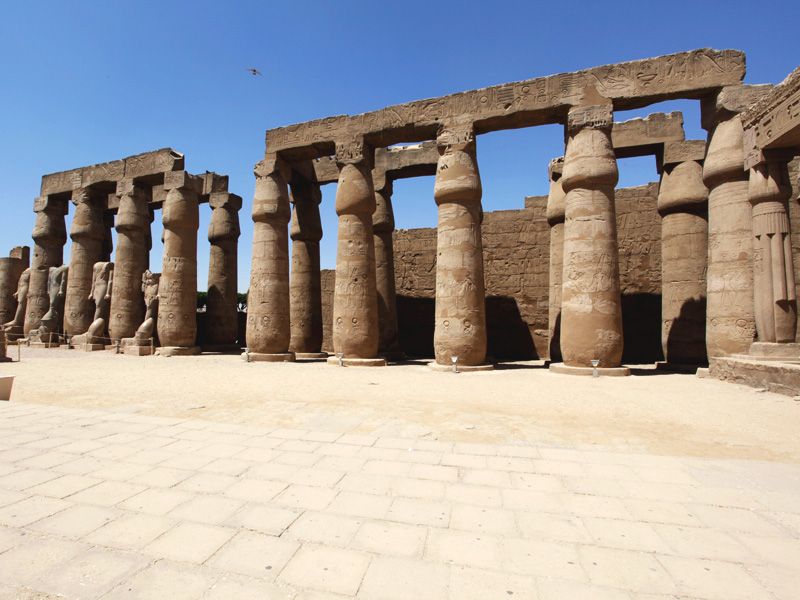The Luxor temple is one of the largest religious buildings in the Egyptian history constructed approximately 1400 BCE. Amenhotep III, pharaoh or king of the 18th dynasty built this temple along with Tutankhamun and Ramses II.
Did You Know? In Egyptian language, the temple is called ipet resyt, meaning ‘the southern sanctuary”.
Luxor temple is for the rejuvenation of kingship. It means that it is not dedicated to a certain god or king. Moreover, many kings were crowned in this temple.
Interesting Fact: The two obelisks (typically pillar) at the entrance of the Luxor temple are not of the same height. But they create an illusion that they were.
When Christian’s came into the picture, they converted the Great Hypostyle Hall into a church. Originally, the entrance was through the court which led to the Hypostyle hall.
The hall had 32 huge columns. It also had 4 small rooms and an antechamber which led to the birth room, the chapel of Alexander the Great and the Sanctuary.
Did You Know? Alexander the Great who told everyone that he was crowned at Luxor but may never have travelled south of Memphis, near modern Cairo. Was he lying?
EXCAVATION of LUXOR TEMPLE
Due to increase in population in Luxor (on top and around the temple), a lot of stones, bricks, mud, and dirt was accumulated. It was so bad that literally a hill was formed some 14 to 15 meters in height.
However, Professor Gaston Maspero on the order of the government started the excavation in 1884. The accumulation almost buried three quarters of the site which consists of the courts and halls. Not only that, there was so much rubbish like stores, houses, huts, pigeon towers that needed to be removed.
Fact: There is still a mosque within the Luxor Temple which was never removed.
OPET FESTIVAL
During the New Kingdom, “The Beautiful Feast of Opet” or Opet Festival was celebrated. It was an annual festival in Thebes (modern-day Luxor).
The procession had huge statues of various kings like Amun, Mut and their son Khonsu. It began from the temple of Amun in Karnak and end at the temple of Luxor.
The wonderful highlight of the whole procession was meeting of Amun-Re of Karnak with Amun of Luxor.
SHRINE STATIONS
As we move forward from Karnak Temple to Luxor Temple, you will find many human-headed sphinxes. In between, there were various stations set up for ceremonies like Feast of the Opet and each station had a purpose.
FAQ?
How to Reach: Take a taxi to the temple.
What to Expect: Life-size statues of Ramses II, Nefertari and many more, ancient Egyptian art and architecture.
Weather: The weather is generally hot and dry. So, your travel clothing should be light and comfortable.
What to carry: Sun block, a hat, duffle bag to put your stuff into and water bottles.
Currency: Egyptian Pound (EGP)











Leave a Reply
You must be logged in to post a comment.